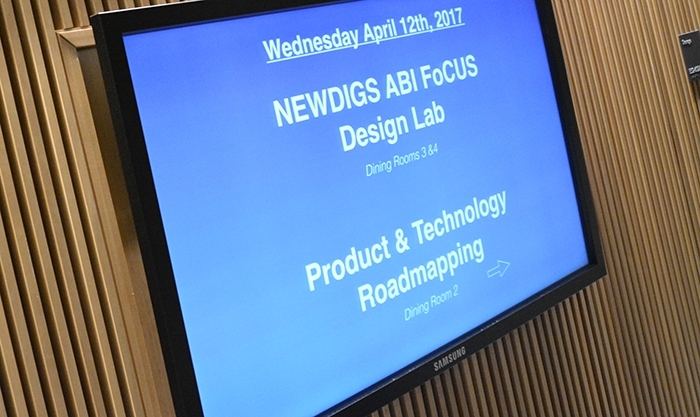The MIT NEW Drug Development Paradigms (NEWDIGS) initiative, an international biomedical innovation “think and do tank” involving a range of stakeholders in the health care system, hosted a collaborative design lab to explore ways to make potentially curative — but expensive — therapies available to patients as they emerge from development. Sixty-nine people, representing pharmaceutical companies, patient advocacy groups, payers, health care providers, and policymakers, participated.
The NEWDIGS Design Lab, held April 11-13 at MIT, was part of an ongoing NEWDIGS project called Financing and Reimbursement of Cures in the U.S. (FoCUS). The project was started to help parties in the health care system develop new financial models to support drug development, optimizing benefit from and access to new medicines for patients, while also ensuring the sustainability of pharmaceutical innovation.
The goal of the design lab was to identify adoption barriers and possible responses for two model gene therapy compounds and a hypothetical new oncology compound. They were chosen as cases to study because they represent classes of innovative therapies in the development pipeline that, while suggesting dramatic benefit to patients, may be too expensive to succeed under current financing and reimbursement schemes. The workshop also included “commons” sessions to allow for discussion about cross-cutting issues shared by both product classes. In order to encourage openness and collaboration in a safe harbor environment, the workshop was held under strict confidentiality terms and Chatham House Rule.
“In the design lab, we are innovating how we innovate,” said Gigi Hirsch, executive director of the MIT Center for Biomedical Innovation. “FoCUS participants will help develop realistic solutions to a key problem: How do we provide timely access for patients to very promising but costly treatments, in ways that are consistent with all stakeholders’ goals?”
“We’re excited to participate in this multi-stakeholder work,” said a delegate of the biotech company developing one of the case study compounds. “The design lab was a safe place to discuss the complicated financing issues around [these products].”
FoCUS working groups formed last fall presented their work in the design lab, receiving feedback from participants to help them develop financing plans for “pressure testing” over the next six months. The subsequent goal of the workgroups will be to refine the models for real world pilot projects, designed to fuel scalable solutions and to inform policy recommendations.
To make effective progress, NEWDIGS makes sure there is strong representation of many perspectives. “The patient is at the forefront of everyone’s interest, and we’re not demonizing one another,” said a representative of a patient advocacy group. “[Our community] needs to be part of the solution, and this gives us a seat at the table.”
Open discussion among people holding different perspectives is key to the design lab methodology. One participant, a career executive for payer organizations, said, “I gained perspective from the developer and patient advocate points of view. I continue to be amazed how much we need to learn from each other and appreciate the opportunity to collaborate across stakeholders.”
Another participant, representing a major pharmaceutical company, noted the surprising insights that come from multi-stakeholder dialogue. “It is incredible how so many of us are inclined to address new issues with existing/old tools simply because ‘that’s the way it’s been done’ without necessarily stopping to think: Why have we done things that way?” she said. “Do those circumstances apply to this new situation? And what could we do differently that will result in better outcomes for patients, smoother processes for providers, sensible structures for payers and adequate reimbursement for innovative developers?”
Members participating in the design lab recognize the complex hurdles ahead, but remain optimistic about progress. “Considering the significant clinical, operational, business, and analytical talent participating in the design lab, I have tremendously high and optimistic expectations from future design lab sessions,” said a representative of a major insurer. “The collective assimilation of experience, education, energy, and passion within our group will likely deliver a multiplier impact — with future healthcare delivery outcomes that are both beneficial and rewarding.”
“Typically, folks present issues in this sector in a static environment,” said another attendee, a policy advisor to a U.S. senator on the HELP and Finance committees. “These design labs helped me appreciate how stakeholders can work together to drive patient access to new therapies. Our discussions highlighted where uncertainty exists, and showed me how changes could facilitate a shift towards rewarding value in patient outcomes.”
According to Hirsch, “FoCUS gives our community of healthcare players a platform to iterate solutions that are practical for all those involved in the pharmaceutical innovation chain. This week’s design lab helped us make progress on these incredibly complex challenges, and we look forward to the pilot projects that may emerge in the coming months."






